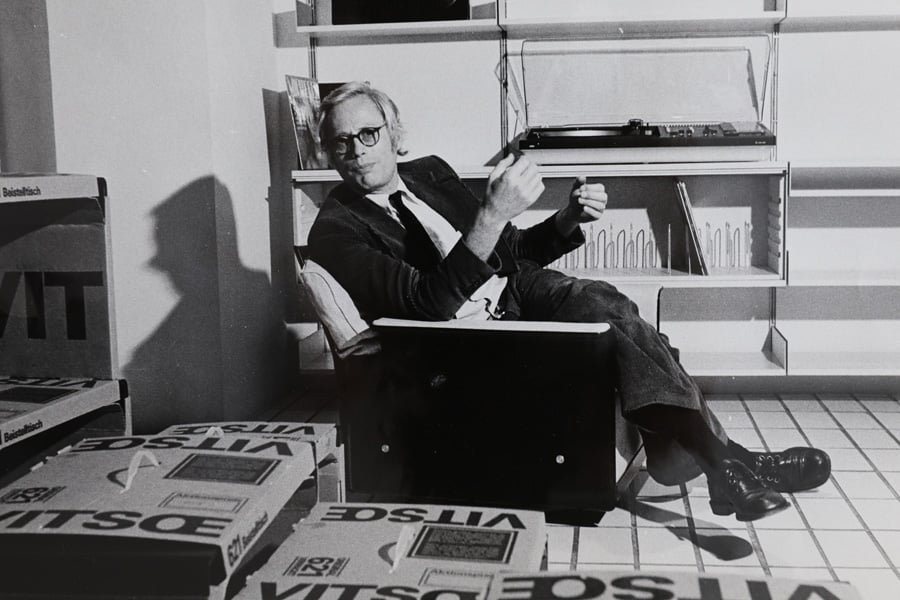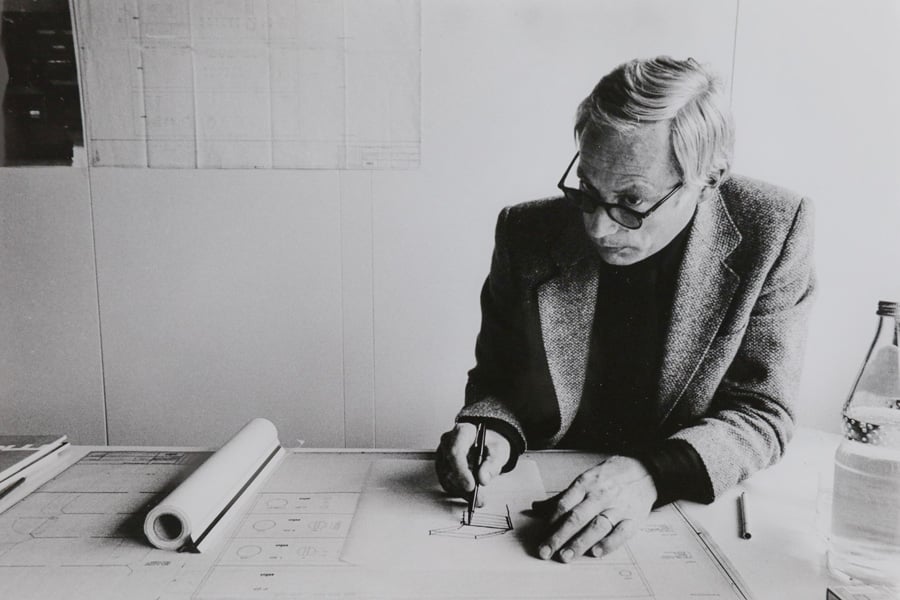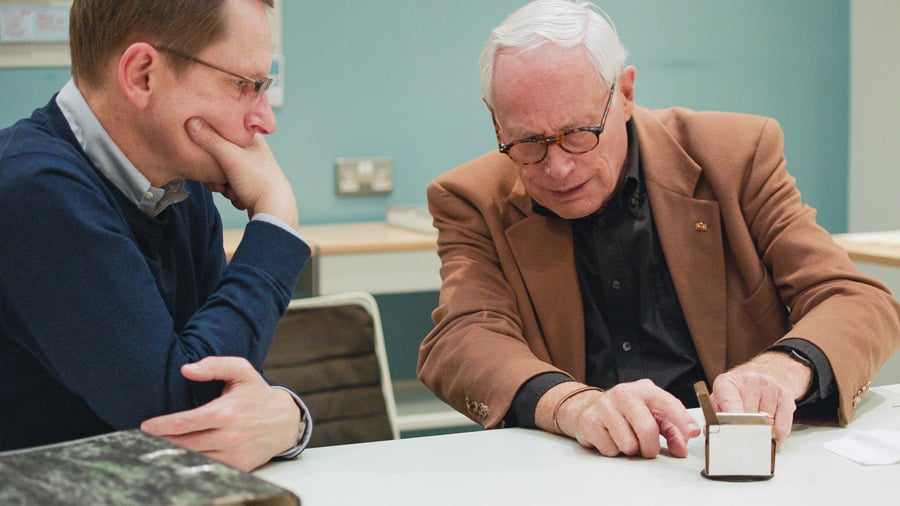
November 2, 2018
New Documentary Provides a Portrait of Design Superstar Dieter Rams
In Rams, Gary Hustwit—of Helvetica and Objectified acclaim—looks into the enduring legacy of the 86-year-old German industrial designer.

As designers become as recognizable as their products, 86-year-old Dieter Rams looms large—and uneasily—over the world he helped create. First at Braun, then Vitsoe, Rams and his teams generated countless items—from shavers, watches, and kitchen appliances to stereos, shelving, and furniture—that shaped the postwar experience for generations of international consumers. Rams also became a kind of polestar for aspiring designers who revered the German’s work and his 10 Principles for Good Design. (Good luck seeing Rams’s Braun T3 pocket radio, with its tuning wheel and square-grid speaker, and not mistaking it for a prototype of Jony Ive’s original iPod.)
Surprisingly, Rams has never been the focus of a documentary. But that changes with Rams, currently playing the film festival circuit with a limited theatrical run scheduled this month followed by a video-on-demand release.
Director Gary Hustwit (of Helvetica acclaim) featured Rams in his 2009 film Objectified, just as the designer-as-superstar movement took flight. They remained in touch, and while Rams wasn’t necessarily keen on the idea of a documentary portrait Hustwit leveraged his relationship with the designer to convince him of its merit.
Still, there was more to Rams’s decision than his rapport with the director. “I think he looks at most designers who are in the public eye and is a little bit saddened about the devaluation of design,” Hustwit tells Metropolis. “He’s not somebody who pushes himself out there as this thought leader or celebrity. He’s a design engineer trying to make things better. I think one of the reasons he agreed to do the film was to stay a part of that conversation.”
Rams is an ideal megaphone. The designer is still the dashing, koan-dropping iconoclast idolized around the world. But Hustwit restores Rams’s three-dimensionality with a warm and humanistic, at times clinical and fetishistic, yet always affecting cinematic portrait. We’re given intimate access to Rams at his home in Germany, where, surrounded by five decades of his designs, he works and blisses out to Oscar Peterson. We’re along for his visits to Vitsoe’s London offices and, later, the company’s under-construction eco-friendly, Rams-inspired new headquarters in Royal Leamington Spa. We’re at his side as he participates in exhibitions, panels, and celebrations. Insight and memories from Rams’ Braun colleague and collaborator Dietrich Lubs, Vitsoe managing director Mark Adams, designer Naoto Fukasawa, and Dieter Rams: As Little Design as Possible author Sophie Lovell, among others, fill in the 73-minute documentary. But we never stray far from the designer for long.
Hustwit presents his subject with a depth of research and insight that it will prove revelatory, even for the most die-hard Ramsophile. (One excellent biographical fact: Rams learned hand polishing from his grandfather, a master carpenter whose workshop was young Rams’s place of refuge.) The director, too, gained new insight into Rams while making the film. Over the course of the production, he learned that the designer’s core beliefs haven’t wavered. On-screen in Objectified, Rams fretted over “arbitrariness and thoughtlessness” in design, adding, “We have too many unnecessary things everywhere.” Nine years later, mindless overconsumption shows no signs of abating. And one of the worst offenders, the planned obsolescence for personal electronics central to Silicon Valley’s business model, continues to complicate an issue that preoccupies Rams: sustainability.
Apple, whose design team is led by Ive, a committed Ramsian, held two product launches in seven weeks, on September 12 and October 30, rolling out multiple new iPhones, a new iPad, and new computers. In many cases, the new devices were advertised as replacements for “old” technology that is still so powerful and functional that to call it outdated is laughable. Rams’s acolytes seem to gloss over points seven and nine of the 10 Principles: Good design is long lasting, and good design is environmentally friendly.
In the new film, Rams speaks more explicitly against a culture of disposability run amok — and its implications for the world writ large. “We have to get away from the ‘un-culture’ of abundance,” he says. “Because there is no future with so many redundant things. ‘Less, but better’ is not just a design concept. It’s also about our behavior. Less would be better everywhere.”
As consumer culture worsens, Hustwit believes the man whose legacy has been co-opted by designers responsible for those items can lead the way out of the escalating crisis.
“I think anything that makes us reexamine our behavior as consumers and, hopefully, gets companies to reexamine their practices in terms of sustainability can only be a good thing,” Hustwit says. “And I hope the film and Rams’s ideas will remain part of that conversation.”
You might also like, “6 Things We Learned When Designing for People with Disabilities.”
Recent Viewpoints
Viewpoints
Sustainability News Updates for Q2 2025








